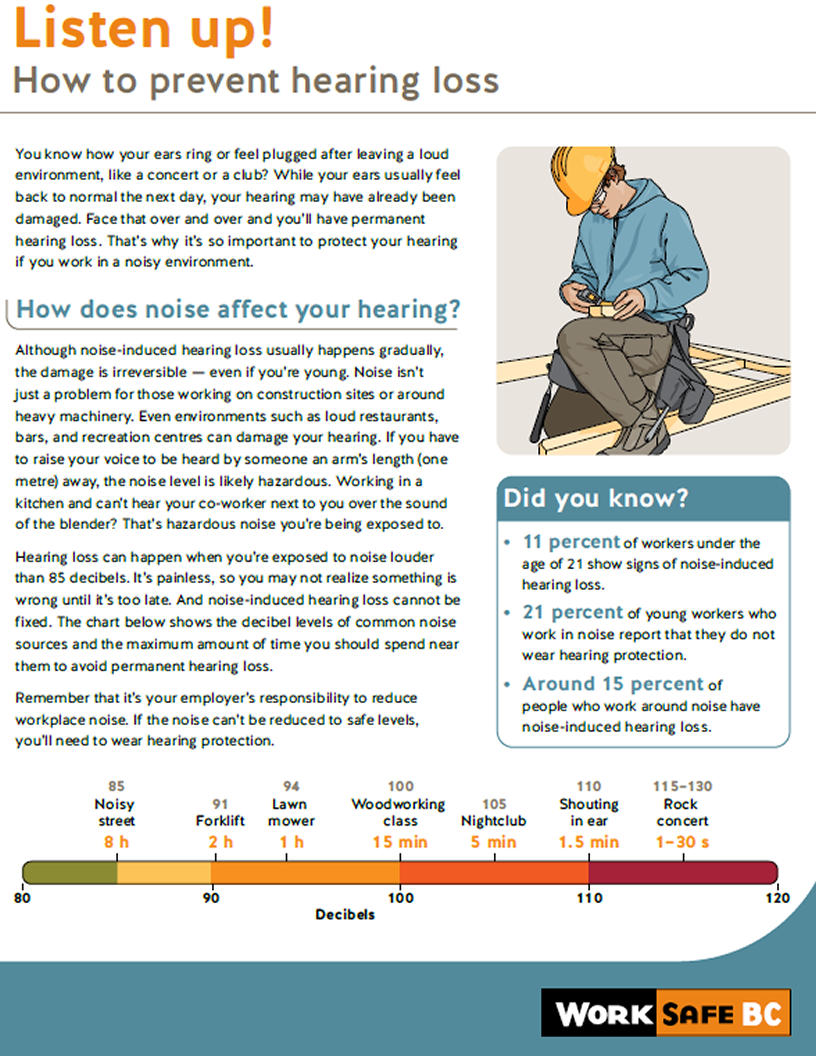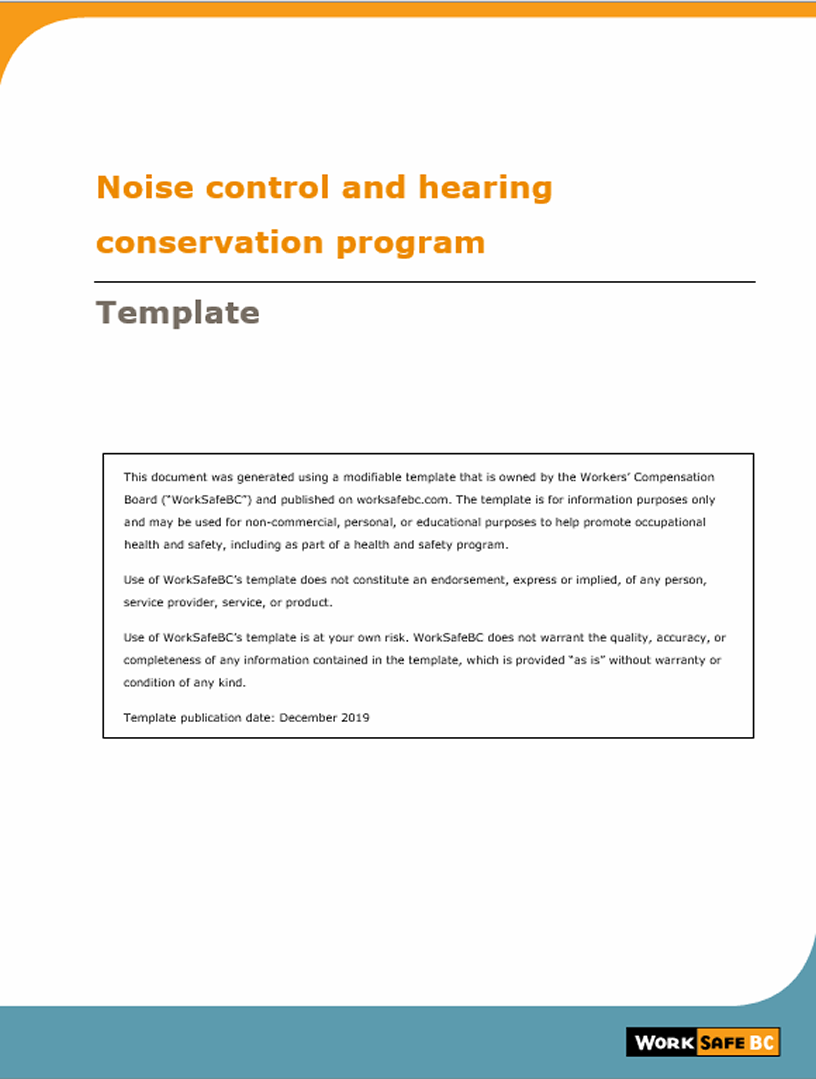Hearing loss prevention
If you're an employer and people are exposed to hazardous noise levels in your workplace, you are responsible for protecting their hearing. A prevention program is required to reduce or eliminate the risk of occupational noise-induced hearing loss.
- Program components
- Reviewing your program
- Resources
As part of your program, you'll educate workers about noise and how to protect their hearing, provide and maintain personal protective equipment, and pay for annual hearing tests for workers.
You'll need a hearing loss prevention program if the noise level in your workplace exceeds the Regulation. Creating a program involves these three steps:
- Measure the noise in your workplace. If you have reason to think that the noise levels are hazardous without measurements (e.g., noise emission declaration on machinery), this step can be skipped.
- Write the plan.
- Review your program.
To assist in developing your program, you can use the Noise control and hearing conservation program template. You are not required to use this template, as long as your program includes all the required program components described here.
Program components
Your program should be designed to reduce the level of noise, and to identify other ways to protect workers from hearing loss. Your plan should be in writing, and list the steps you'll take to provide each of the necessary components of a hearing loss prevention program:
You'll probably need to hire someone who has the appropriate equipment and ability to interpret the results to to measure the noise in your workplace. If you have other information, such as labels on equipment or information from WorkSafeBC, that indicates workers are exposed to hazardous noise, you are exempt from measuring the noise if you implement a noise control and hearing loss prevention program.
If the levels of noise could be harmful to workers, you'll need a program for noise control and hearing loss prevention.
Employers and workers need information about their noise exposure, the effects of noise on hearing, how to protect hearing by properly using and maintaining hearing protection, and how annual hearing testing is used to monitor hearing levels. See resources for materials which can be used in an educational program.
The best way to deal with noise in the workplace is to reduce noise at the source with engineering controls such as choosing quieter equipment, enclosing the noise source or the worker, acoustically treating the room, reducing the worker's length of exposure and separating the worker from the noise source.
Administrative controls, which involve changing work practices and policies, should be considered next after engineered noise controls. Hearing protection should be a last resort if hazardous noise cannot be reduced through other means.
As part of your responsibilities, you'll provide and maintain personal protective equipment for your workers. Keep in mind that no single hearing protector is appropriate for everyone. Protection must be unique to the workers, their roles, and the equipment they use. Consider these factors when choosing hearing protection:
- The worker's noise exposure level
- Hearing ability of the worker
- Use of other personal protective equipment
- Temperature and climate in the workplace
- Communication demands on the worker
- Physical constraints of the worker or work activity
- Personal preference
- Comfort
- Fit
Safety supply companies are a good source for hearing protection, as they typically carry complete product lines. They'll also have different models and types of earplugs and earmuffs. Custom-moulded earplugs are another option.
If you can't reduce noise in the workplace to safe limits or lower, you must post warning signs. These signs must state that:
- A noise hazard exists
- Hearing protection must be worn by all workers in that area
It is recommended that signs be simple and that they do not indicate measured noise level, or specify that a certain class of hearing protection must be worn.
Hearing tests are conducted annually for all noise-exposed workers. The purpose of the tests is to identify early signs of noise-induced hearing losses, before workers notice significant problems. The test results should be explained to workers right after the hearing test, follow up by a doctor may also be suggested, and use of hearing protection should be discussed.
If workers show early signs of noise-induced hearing loss, you should also use this information to make changes to your hearing loss conservation program to prevent further hearing loss.
If you want a copy of past hearing tests that may be on file with WorkSafeBC, please submit this authorization document. You can also view statistics of hearing tests in B.C. and compare your test results to others in your sector.
Hearing testing must be done by a technician authorized by WorkSafeBC. See our list of authorized hearing test facilities.
More information about annual hearing testing is available for workers, employers, and hearing test providers.
Reviewing your program
Once a year you must review your program to make sure it's effective and protects workers. Here are some questions your review should answer:
| Noise measurements |
|
| Engineered noise controls |
|
| Hearing protection |
|
| Education and training |
|
| Hearing test results |
|
Highlights
- New resource to help young workers prevent hearing loss Published on: June 11, 2020
- New resources to help employers develop a noise control and hearing conservation program Published on: September 04, 2019













